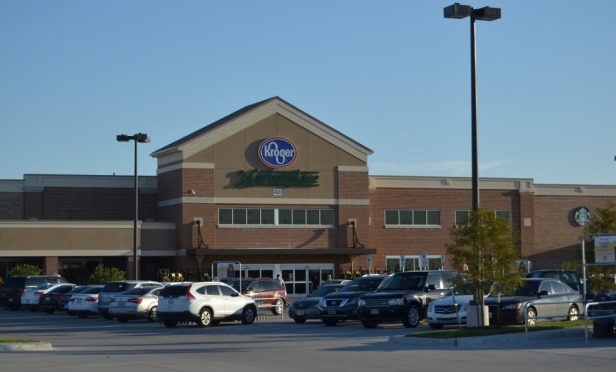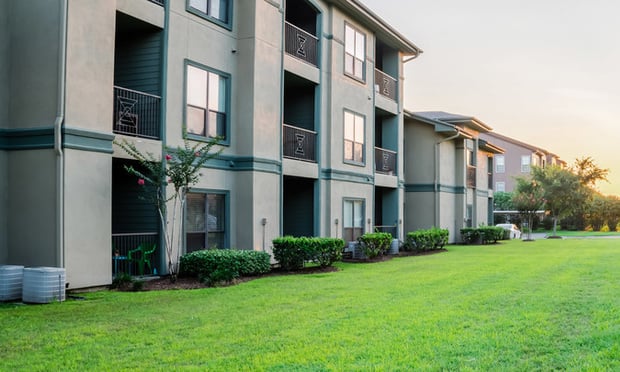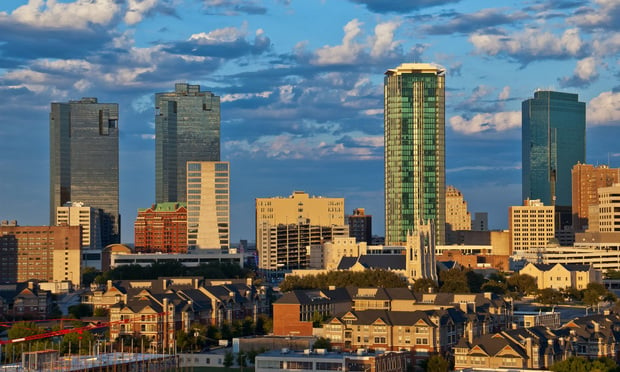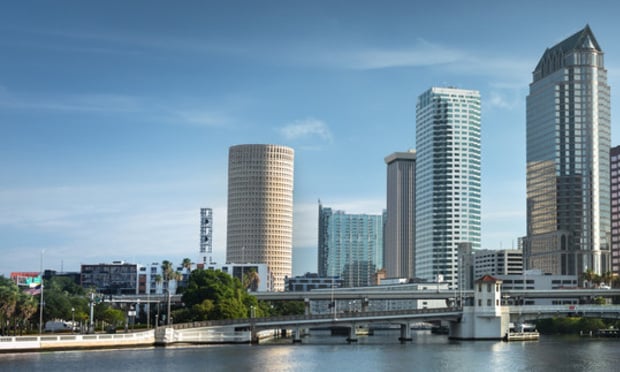 DALLAS—Every up cycle before this one ended due to overbuilding. Thus far, that is not happening in the retail sector, according to the mid-year retail report by The Weitzman Group/Cencor Realty Services . Dallas/Fort Worth's retail market as of mid-year 2016 continues to report overall occupancy right at 91.6%, thanks to new pre-leased construction that adds to occupancy, the backfilling of large retail vacancies and only a few retail closings, most notably Sports Authority and Fresh Market . The Weitzman Group/Cencor Realty executive chairman Herbert D. Weitzman tells GlobeSt.com: “In my experience, we've seen every major upward cycle for DFW retail halted by a wave of overbuilding. We're not seeing that in this cycle, and because of the balance in supply and demand, we expect this positive cycle to continue for a good while.” For DFW's retail market, occupancy exceeding 90% is becoming almost commonplace, despite the fact that occupancy remained below that mark for years, even dropping to as low as 86% in 2009. In fact, the current occupancy rate is second only to year-end 1984, when the market posted 92%. The market is on track to match or exceed that record rate, based on current leasing and demand supported by the market's hottest residential market in years, population growth that leads the nation and job growth that has resulted in a market with near-full employment, with an unemployment rate of only 3.5%, says Weitzman Group/Cencor Realty. The occupancy gain during the past year was boosted by the strong economy along with construction dominated by space for anchors, meaning that construction helps boost occupancy; limited store closings, with well-located vacancies re-leased within months, not years; and new market retailer and restaurant entrants that expanded primarily via existing space due to the limited amount of new speculative space, according to the report. The DFW occupancy rate is based on a total market inventory of approximately 194 million square feet of retail space in shopping centers with 25,000 square feet or more–the largest retail inventory for any metro area in Texas. Every category of retail center except one reports occupancy rates above 90%, says Weitzman Group/Cencor Realty. Even neighborhood centers, long the market's weakest category, report occupancy nearing 87%, the category's strongest performance in years. The market did record some new key vacant spaces come onto the market, most notably the nine closed Sports Authority stores, which created more than 411,000 square feet of new vacancy, plus four Fresh Market stores, although altogether these add up to less than 90,000 square feet. DFW has a track record of backfilling retail vacancies and 2016 is no exception. To make locations and existing centers as attractive as possible for expanding retailers, many sites are undergoing renovations. In Uptown Dallas, even mixed-use project The Crescent is in the game, this year wrapping up a $33 million renovation that is helping to sign new concepts such as the popular New York-based Shake Shack . As expanding grocers such as WinCo with its new 85,000-square-foot stores opening in existing centers, many projects are reporting the highest occupancy in decades thanks to the grocer's shopper traffic and the co-tenancy it attracts. For 2016, leasing in existing centers is boosting occupancy and eliminating all sizes of spaces from the market. As of mid-year 2016, based on retail open or scheduled to open this year, DFW is on track to add approximately 2 million square feet in new and expanded projects, says the report. The construction total represents a notable drop from 2015, when the market reported new construction of 2.7 million square feet of retail in new and expanded projects. While millions of square feet remain in the pipeline, key reasons for the drop in new space compared to 2015 include limited shop space in conjunction with anchors such as Kroger Marketplace , phased development based on demand and major mixed-use developments taking longer than first announced. With growth expected to continue in the key areas of population, jobs and residential growth, the outlook for the DFW retail market for the remainder of 2016 is for steady gains that will carry forward to 2017.
DALLAS—Every up cycle before this one ended due to overbuilding. Thus far, that is not happening in the retail sector, according to the mid-year retail report by The Weitzman Group/Cencor Realty Services . Dallas/Fort Worth's retail market as of mid-year 2016 continues to report overall occupancy right at 91.6%, thanks to new pre-leased construction that adds to occupancy, the backfilling of large retail vacancies and only a few retail closings, most notably Sports Authority and Fresh Market . The Weitzman Group/Cencor Realty executive chairman Herbert D. Weitzman tells GlobeSt.com: “In my experience, we've seen every major upward cycle for DFW retail halted by a wave of overbuilding. We're not seeing that in this cycle, and because of the balance in supply and demand, we expect this positive cycle to continue for a good while.” For DFW's retail market, occupancy exceeding 90% is becoming almost commonplace, despite the fact that occupancy remained below that mark for years, even dropping to as low as 86% in 2009. In fact, the current occupancy rate is second only to year-end 1984, when the market posted 92%. The market is on track to match or exceed that record rate, based on current leasing and demand supported by the market's hottest residential market in years, population growth that leads the nation and job growth that has resulted in a market with near-full employment, with an unemployment rate of only 3.5%, says Weitzman Group/Cencor Realty. The occupancy gain during the past year was boosted by the strong economy along with construction dominated by space for anchors, meaning that construction helps boost occupancy; limited store closings, with well-located vacancies re-leased within months, not years; and new market retailer and restaurant entrants that expanded primarily via existing space due to the limited amount of new speculative space, according to the report. The DFW occupancy rate is based on a total market inventory of approximately 194 million square feet of retail space in shopping centers with 25,000 square feet or more–the largest retail inventory for any metro area in Texas. Every category of retail center except one reports occupancy rates above 90%, says Weitzman Group/Cencor Realty. Even neighborhood centers, long the market's weakest category, report occupancy nearing 87%, the category's strongest performance in years. The market did record some new key vacant spaces come onto the market, most notably the nine closed Sports Authority stores, which created more than 411,000 square feet of new vacancy, plus four Fresh Market stores, although altogether these add up to less than 90,000 square feet. DFW has a track record of backfilling retail vacancies and 2016 is no exception. To make locations and existing centers as attractive as possible for expanding retailers, many sites are undergoing renovations. In Uptown Dallas, even mixed-use project The Crescent is in the game, this year wrapping up a $33 million renovation that is helping to sign new concepts such as the popular New York-based Shake Shack . As expanding grocers such as WinCo with its new 85,000-square-foot stores opening in existing centers, many projects are reporting the highest occupancy in decades thanks to the grocer's shopper traffic and the co-tenancy it attracts. For 2016, leasing in existing centers is boosting occupancy and eliminating all sizes of spaces from the market. As of mid-year 2016, based on retail open or scheduled to open this year, DFW is on track to add approximately 2 million square feet in new and expanded projects, says the report. The construction total represents a notable drop from 2015, when the market reported new construction of 2.7 million square feet of retail in new and expanded projects. While millions of square feet remain in the pipeline, key reasons for the drop in new space compared to 2015 include limited shop space in conjunction with anchors such as Kroger Marketplace , phased development based on demand and major mixed-use developments taking longer than first announced. With growth expected to continue in the key areas of population, jobs and residential growth, the outlook for the DFW retail market for the remainder of 2016 is for steady gains that will carry forward to 2017.  DALLAS—Every up cycle before this one ended due to overbuilding. Thus far, that is not happening in the retail sector, according to the mid-year retail report by The Weitzman Group/Cencor Realty Services . Dallas/Fort Worth's retail market as of mid-year 2016 continues to report overall occupancy right at 91.6%, thanks to new pre-leased construction that adds to occupancy, the backfilling of large retail vacancies and only a few retail closings, most notably Sports Authority and Fresh Market . The Weitzman Group/Cencor Realty executive chairman Herbert D. Weitzman tells GlobeSt.com: “In my experience, we've seen every major upward cycle for DFW retail halted by a wave of overbuilding. We're not seeing that in this cycle, and because of the balance in supply and demand, we expect this positive cycle to continue for a good while.” For DFW's retail market, occupancy exceeding 90% is becoming almost commonplace, despite the fact that occupancy remained below that mark for years, even dropping to as low as 86% in 2009. In fact, the current occupancy rate is second only to year-end 1984, when the market posted 92%. The market is on track to match or exceed that record rate, based on current leasing and demand supported by the market's hottest residential market in years, population growth that leads the nation and job growth that has resulted in a market with near-full employment, with an unemployment rate of only 3.5%, says Weitzman Group/Cencor Realty. The occupancy gain during the past year was boosted by the strong economy along with construction dominated by space for anchors, meaning that construction helps boost occupancy; limited store closings, with well-located vacancies re-leased within months, not years; and new market retailer and restaurant entrants that expanded primarily via existing space due to the limited amount of new speculative space, according to the report. The DFW occupancy rate is based on a total market inventory of approximately 194 million square feet of retail space in shopping centers with 25,000 square feet or more–the largest retail inventory for any metro area in Texas. Every category of retail center except one reports occupancy rates above 90%, says Weitzman Group/Cencor Realty. Even neighborhood centers, long the market's weakest category, report occupancy nearing 87%, the category's strongest performance in years. The market did record some new key vacant spaces come onto the market, most notably the nine closed Sports Authority stores, which created more than 411,000 square feet of new vacancy, plus four Fresh Market stores, although altogether these add up to less than 90,000 square feet. DFW has a track record of backfilling retail vacancies and 2016 is no exception. To make locations and existing centers as attractive as possible for expanding retailers, many sites are undergoing renovations. In Uptown Dallas, even mixed-use project The Crescent is in the game, this year wrapping up a $33 million renovation that is helping to sign new concepts such as the popular New York-based Shake Shack . As expanding grocers such as WinCo with its new 85,000-square-foot stores opening in existing centers, many projects are reporting the highest occupancy in decades thanks to the grocer's shopper traffic and the co-tenancy it attracts. For 2016, leasing in existing centers is boosting occupancy and eliminating all sizes of spaces from the market. As of mid-year 2016, based on retail open or scheduled to open this year, DFW is on track to add approximately 2 million square feet in new and expanded projects, says the report. The construction total represents a notable drop from 2015, when the market reported new construction of 2.7 million square feet of retail in new and expanded projects. While millions of square feet remain in the pipeline, key reasons for the drop in new space compared to 2015 include limited shop space in conjunction with anchors such as
DALLAS—Every up cycle before this one ended due to overbuilding. Thus far, that is not happening in the retail sector, according to the mid-year retail report by The Weitzman Group/Cencor Realty Services . Dallas/Fort Worth's retail market as of mid-year 2016 continues to report overall occupancy right at 91.6%, thanks to new pre-leased construction that adds to occupancy, the backfilling of large retail vacancies and only a few retail closings, most notably Sports Authority and Fresh Market . The Weitzman Group/Cencor Realty executive chairman Herbert D. Weitzman tells GlobeSt.com: “In my experience, we've seen every major upward cycle for DFW retail halted by a wave of overbuilding. We're not seeing that in this cycle, and because of the balance in supply and demand, we expect this positive cycle to continue for a good while.” For DFW's retail market, occupancy exceeding 90% is becoming almost commonplace, despite the fact that occupancy remained below that mark for years, even dropping to as low as 86% in 2009. In fact, the current occupancy rate is second only to year-end 1984, when the market posted 92%. The market is on track to match or exceed that record rate, based on current leasing and demand supported by the market's hottest residential market in years, population growth that leads the nation and job growth that has resulted in a market with near-full employment, with an unemployment rate of only 3.5%, says Weitzman Group/Cencor Realty. The occupancy gain during the past year was boosted by the strong economy along with construction dominated by space for anchors, meaning that construction helps boost occupancy; limited store closings, with well-located vacancies re-leased within months, not years; and new market retailer and restaurant entrants that expanded primarily via existing space due to the limited amount of new speculative space, according to the report. The DFW occupancy rate is based on a total market inventory of approximately 194 million square feet of retail space in shopping centers with 25,000 square feet or more–the largest retail inventory for any metro area in Texas. Every category of retail center except one reports occupancy rates above 90%, says Weitzman Group/Cencor Realty. Even neighborhood centers, long the market's weakest category, report occupancy nearing 87%, the category's strongest performance in years. The market did record some new key vacant spaces come onto the market, most notably the nine closed Sports Authority stores, which created more than 411,000 square feet of new vacancy, plus four Fresh Market stores, although altogether these add up to less than 90,000 square feet. DFW has a track record of backfilling retail vacancies and 2016 is no exception. To make locations and existing centers as attractive as possible for expanding retailers, many sites are undergoing renovations. In Uptown Dallas, even mixed-use project The Crescent is in the game, this year wrapping up a $33 million renovation that is helping to sign new concepts such as the popular New York-based Shake Shack . As expanding grocers such as WinCo with its new 85,000-square-foot stores opening in existing centers, many projects are reporting the highest occupancy in decades thanks to the grocer's shopper traffic and the co-tenancy it attracts. For 2016, leasing in existing centers is boosting occupancy and eliminating all sizes of spaces from the market. As of mid-year 2016, based on retail open or scheduled to open this year, DFW is on track to add approximately 2 million square feet in new and expanded projects, says the report. The construction total represents a notable drop from 2015, when the market reported new construction of 2.7 million square feet of retail in new and expanded projects. While millions of square feet remain in the pipeline, key reasons for the drop in new space compared to 2015 include limited shop space in conjunction with anchors such as
Want to continue reading?
Become a Free ALM Digital Reader.
Once you are an ALM Digital Member, you’ll receive:
- Breaking commercial real estate news and analysis, on-site and via our newsletters and custom alerts
- Educational webcasts, white papers, and ebooks from industry thought leaders
- Critical coverage of the property casualty insurance and financial advisory markets on our other ALM sites, PropertyCasualty360 and ThinkAdvisor
Already have an account? Sign In Now
*May exclude premium content© 2024 ALM Global, LLC, All Rights Reserved. Request academic re-use from www.copyright.com. All other uses, submit a request to [email protected]. For more information visit Asset & Logo Licensing.








